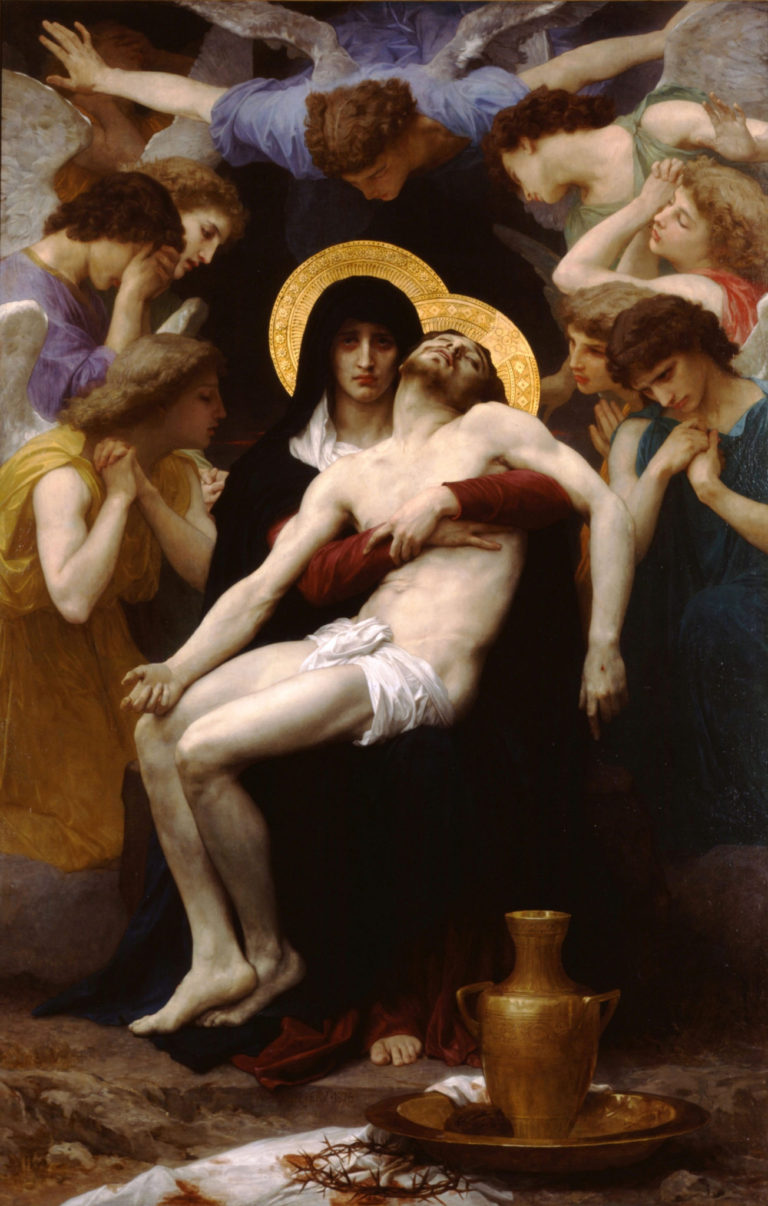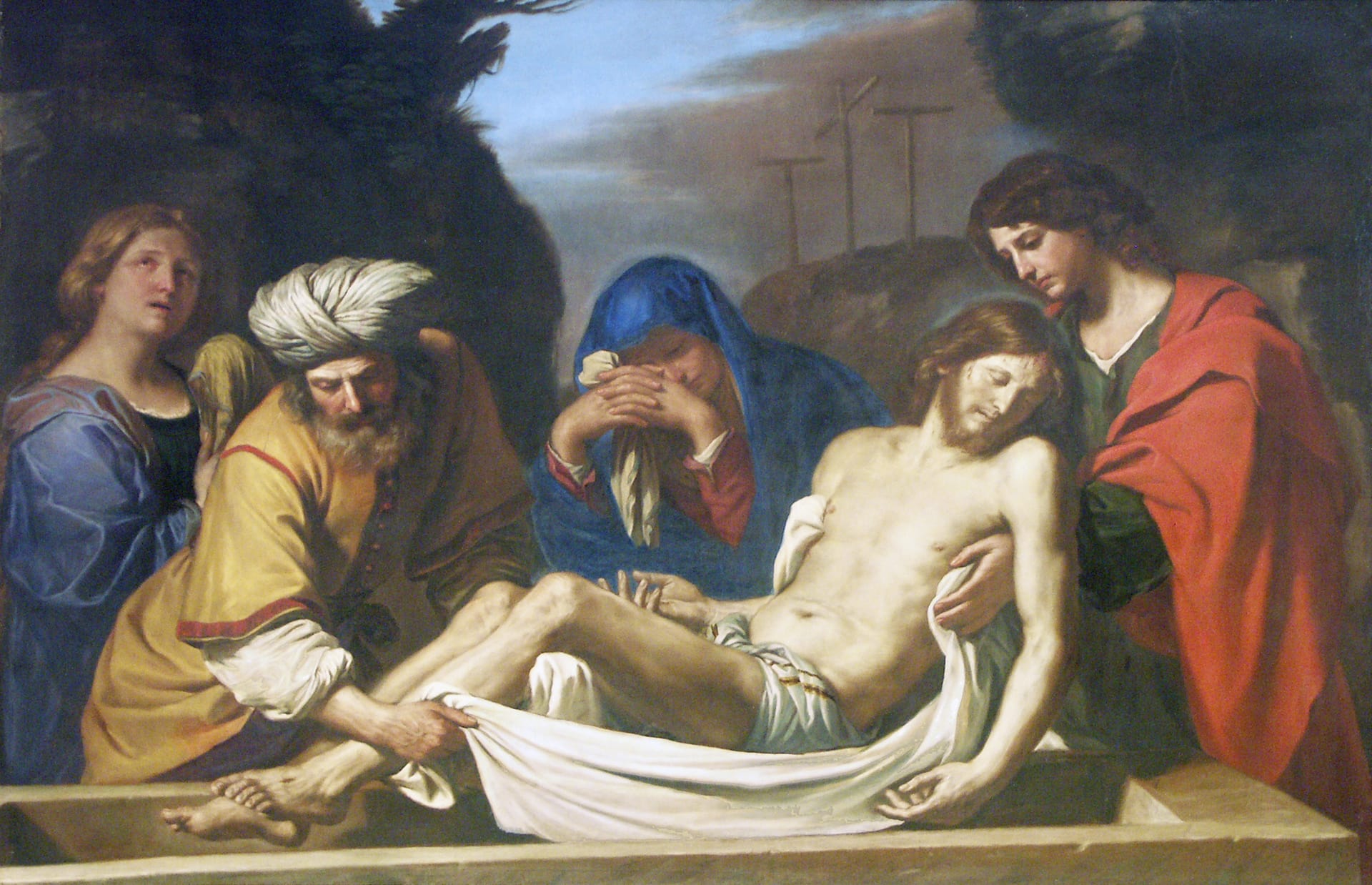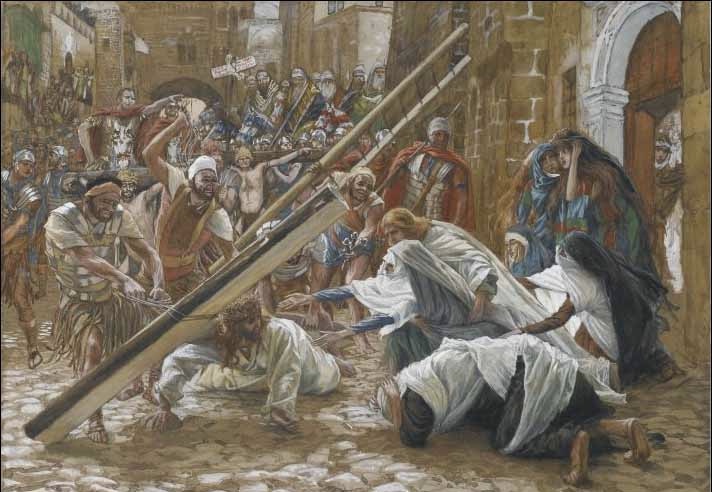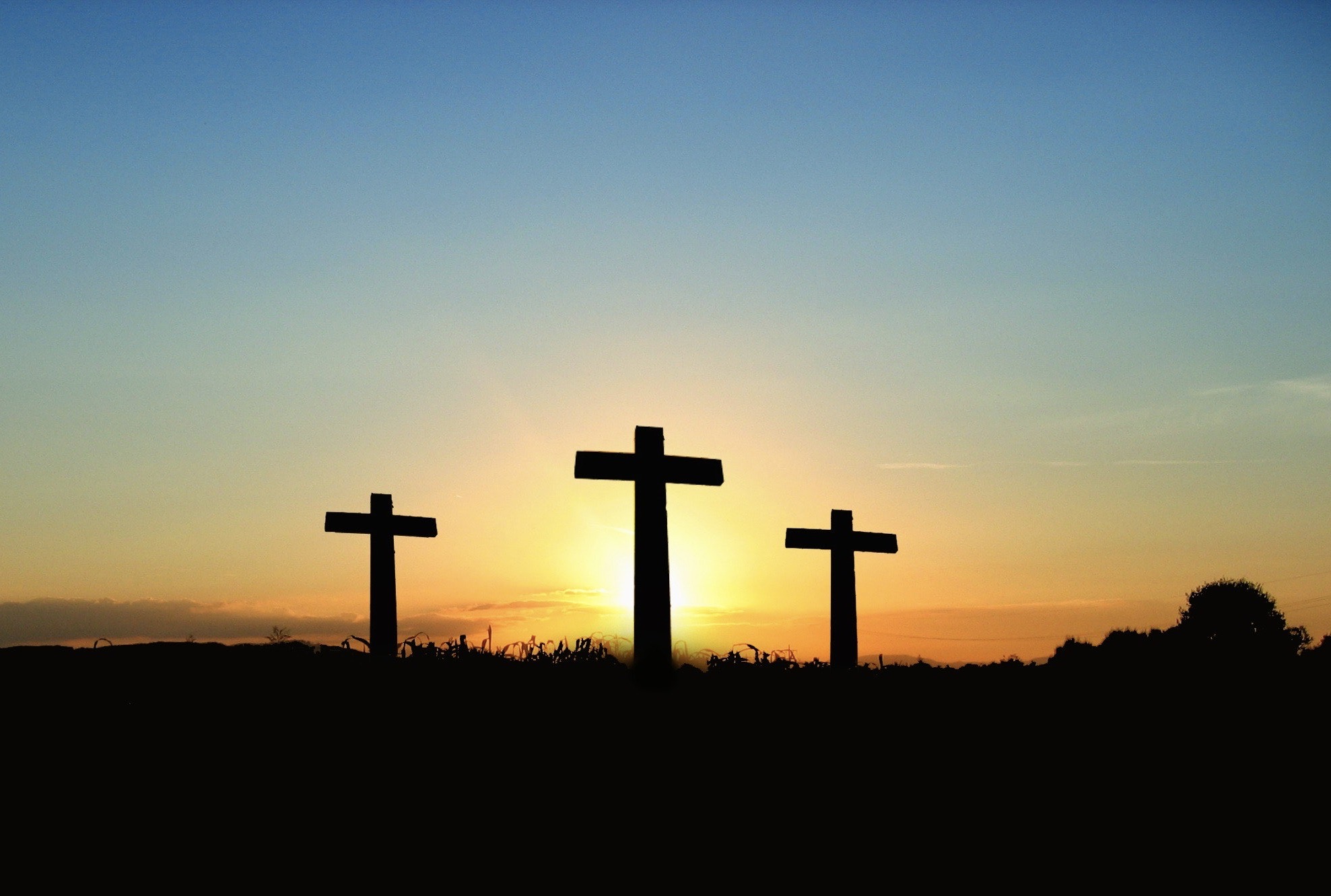Good Friday
- Post author:LisaMarie McNally
- Post published:March 31, 2021
- Post category:Meditations
- Post comments:1 Comment
A non-religious friend of mine asked me, “What’s so good about Good Friday? What’s so good about Jesus being tortured and dying?” It got me thinking about how lazy we have become in our language. In Shakespeare’s time the average person used about 30,000 different words; we use about 5,000. We substitute one word to mean so many things that the word loses its real meaning. We use the word “good” when we mean “tasty” (a good meal), “entertaining” (a good movie), “pleasant” (good weather), “loyal” (a good friend), and let’s not forget “nice” (good manners).
“It is good” spoken by God at Creation, gives us insight into what goodness really means. At this moment there is perfect order in the universe. All of nature is in harmony with God. The “good” accomplished on Good Friday is that Jesus has completed the work to restore the universe to perfect order. We have the opportunity to be restored to the state of grace that had been lost and can choose to live in harmony with God.
What is good about Good Friday? The price for our sin had finally been paid – one time for all eternity. Every time God entered into a covenant with humankind, we broke the covenant. He finally made a covenant with the one person who could and would keep it – His Son – and God became Man for us to make and keep the covenant as a Man for all humanity. It is His fulfilling of the covenant perfectly that is “good.” The word “good” is a reflection of God Himself in His glory, in His mercy, and in His love.
It is this love which we seek to understand better and why Good Friday calls every Catholic home – even those who have been away for a while. To contemplate His suffering is to enter into the mystery of His profound love for us. We cannot grow in our love for Him without entering into mystery of His suffering. It is this willingness to “compassionate” Jesus, to enter into His suffering with Him, placing ourselves at the foot of the cross next to Blessed Mother, that brings so many graces into our lives, enabling us to break the chains of habitual sin and free our souls to love Him more deeply and become the best version of ourselves.
I have written 15 meditations of The Passion below. They can be used for a 15 decade Rosary, a 15 decade Chaplet of Divine Mercy, or Stations of the Cross. The tone in these meditations is unlike my regular posts. They are very graphic, so sensitive people may find them disturbing. If you don’t want to read them, stop reading here.

1st Decade: Pilate knew Jesus was innocent, but he was more interested in keeping power. He knew that once he gave Jesus over to be scourged, the soldiers would be merciless to Jesus. He had seen it before many times. Many people never made it to their crucifixion because the soldiers killed them while torturing them. This didn’t have to happen — Pilate allowed it to happen. He had no love for anyone. And the soldiers were so overjoyed that they had another victim. They were drunk in their gluttony and they were drunk with hatred as they beat Jesus. When Jesus could no longer stand, they kicked Him and stomped on Him. They stomped on His hands when He was trying to get up again. When Jesus finally made it to His knees, they kicked Him in the stomach. They pounded on Him for hours and hours and they cursed God as they did it.
2nd Decade: The soldiers beat Jesus’ face with a rod. They beat Him to a bloody pulp. Then the soldiers, who were wearing metal gloves, punched Him, ripping the skin off His face. By the time Blessed Mother saw Him, there was nothing left of the face She loved.
3rd Decade: The soldiers finished scourging Jesus and untied His hands. He was so weak that immediately fell to the ground. The soldiers yelled at Him to get up, but He could not. They began to curse Him and viciously kick Him in the ribs. He still couldn’t get up. Then one of the soldiers in a rage approached and grabbed the hair on His head and yanked Him to His feet. He didn’t pull Him straight up either. Jesus was dragged before He was actually lifted up. Another soldier came and put the purple robe on Him. A third soldier approached with the crown of thorns and slammed it down on His head. Three of the thorns pierced His skull. One went through His skull and came out above His eye. Jesus staggered, trying not to fall. As He staggered around, the soldiers hit Him and beat His face, torso and back with their fists.
4th Decade: Then they forced Jesus to carry the cross. The cross was made of very rough wood. As He dragged it, He got splinters in His hands and imbedded in His shoulders. The flesh on His shoulder was rubbed off through to the bone, and the sweat dripping from His brow stung His shoulder very badly Jesus fell three times under the weight of the cross. The road He walked was uneven and rocky and the rocks tore the flesh from His knees and were imbedded in His bones.
5th Decade: Mary met Jesus on the road to Calvary. Her heart was breaking to see Jesus in so much pain. Jesus looked into Her eyes and saw that She was suffering everything that He suffered. Upon seeing Jesus, Mary fell on Her knees in worship. The crowds upon seeing this went mad. They roughly pushed Blessed Mother aside. They pushed Her so roughly that She fell into the street and scraped Her hands on the gravel. They started insulting Her and cursing Her. Jesus cried in pain for the way they treated His Beloved Mother, the gentle dove who never hurt anyone. His dearly beloved Mother who had nurtured Him for so many years, given Him so much love, was suffering so much. It broke Jesus’s heart; He fell every time Her image came into His mind because He was so overwhelmed with grief.
6th Decade: Simon was forced to help Jesus carry the cross. Jesus spoke no words to Simon, but pleaded with His eyes, “Please have pity on me. Please help me. I am dying for you. Please show me just a little compassion.” But Simon hated Jesus. He resented being forced to carry the cross. He only did it because he feared the soldiers would kill him if he refused. His burning hatred wounded Our Lord terribly. Mary felt his hatred in Her heart and it took Her breath away. Her fervent prayers for Simon rained down graces for his conversion and softened his heart.
7th Decade: When He got to Golgotha, He stood there while they ripped the clothes off His body. The blood had dried against the cloth. The little flesh that he had left was ripped off in chunks with the cloth. As Jesus was standing there in agony, one of the soldiers offered Him something to drink that was drugged with a painkiller. But Jesus refused this drink. The others soldiers who were preparing the cross saw this, and that’s when they got the idea to make the holes for His hands and feet so far apart. Then when Jesus lay down on the cross, they wrapped chains around Him and pulled, dislocating His arms and legs from their sockets so that he would fit in the holes they had made.
8th Decade: Then they nailed Him to the cross. But they didn’t tie the ropes tightly enough and when they lifted the cross up, Jesus slid down the cross. The nails tore through His hands and the splinters dug into His very bones. As He slid down the cross, the agony was so great that He cried out with blood curdling screams. He tried so hard to hold them back, but the pain was too great. And His Dearly Beloved Mother upon hearing Jesus’ screams, almost died in agony at His suffering.
9th Decade: Jesus was naked on the cross. When His Mother saw Him on the cross, what She saw did not even look human. His arms, legs, torso, His whole body was scourged. His poor Mother, She had never seen a man like this. She looked up and saw Her Son and what She saw wasn’t even a body anymore. Jesus was torn apart, mangled. As Blessed Mother stood at the foot of the cross and looked up at His agony, She was filled with a sea of sorrow and distress. The blood dripping from Jesus’s body fell on Her face and was mingled with Her own tears.
10th Decade: There were many flies circling in the heat. They landed on Jesus and He could do nothing to chase them away. His body was a carcass, rotting on the cross while He was still alive.
11th Decade: The sun was so hot it burned Jesus’s body. His sweat caused every wound to sting mercilessly. His skin was so sunburned that by the time they took Him down from the cross and put Him in His Mother’s arms, His entire body was blistered.
12th Decade: His lips were cracked and bleeding on the cross. His tongue was stuck to the roof of my mouth. He could barely ask for a drink, but He had to. He knew it would sting His cracked lips, but He had to say goodbye to His Mother, and He had to give Her to us.
13th Decade: As He hung on that cross, every nerve of His body was stretched and broken. He convulsed in agony. His poor Mother’s heart was broken to see Him suffering like that.
14th Decade: Jesus was overwhelmed with grief at the abandonment of those who loved Him. Blessed Mother was at the foot of the cross desperately praying every second with such profound intensity that only heaven can comprehend, but Jesus couldn’t feel it. As Jesus cried out to His Father, “Why have you abandoned Me?” Satan stood at the foot of the cross and said, “You see, God doesn’t love you” and continued laughing at Him and taunting Him.
15th Decade: When the soldier pierced His heart, the blood and water flowed separately because His Heart was broken with sorrow. Mary physically felt the pain of the sword in Her own heart. She screamed in agony and collapsed into the arms of St. John.




